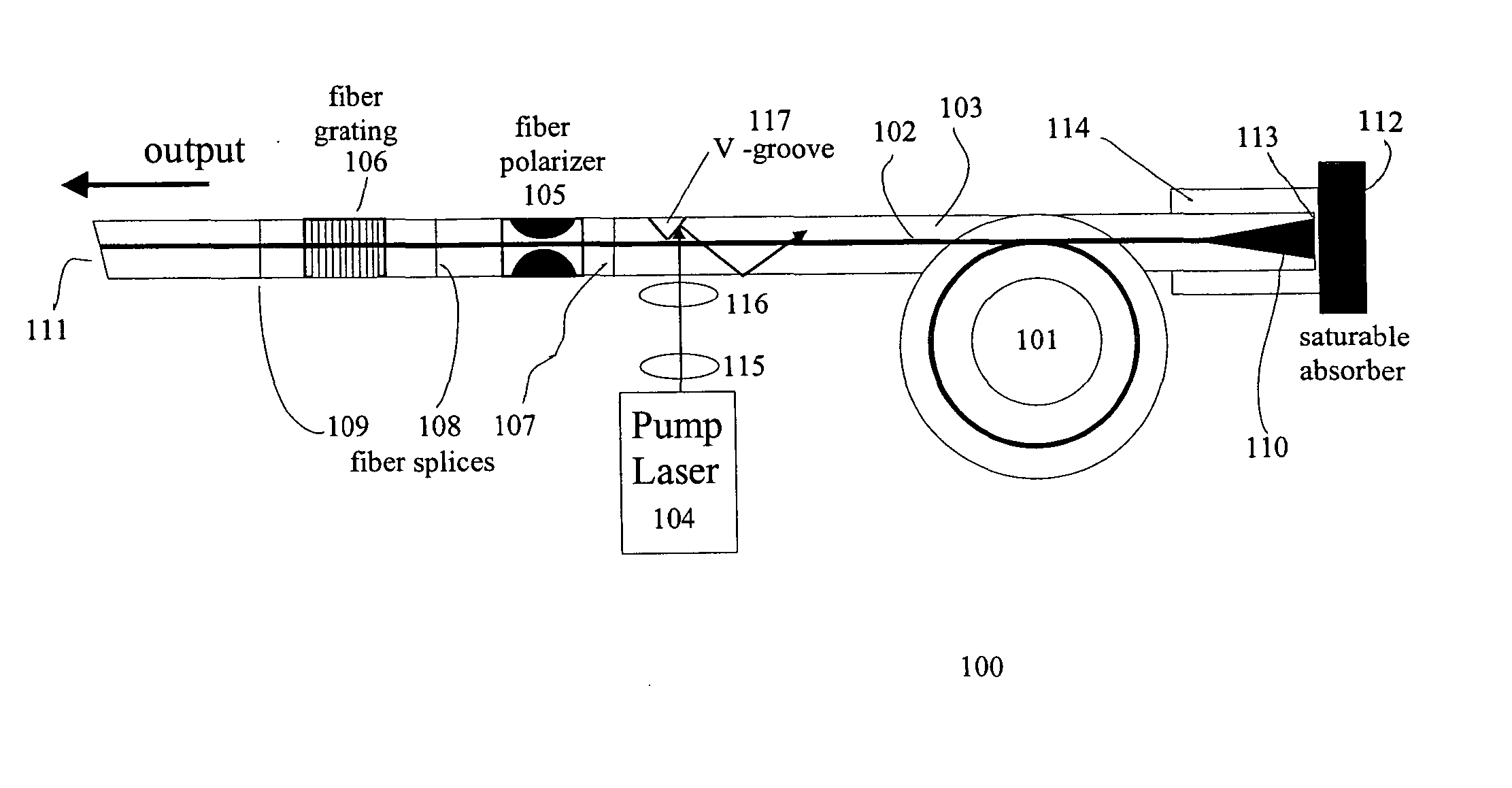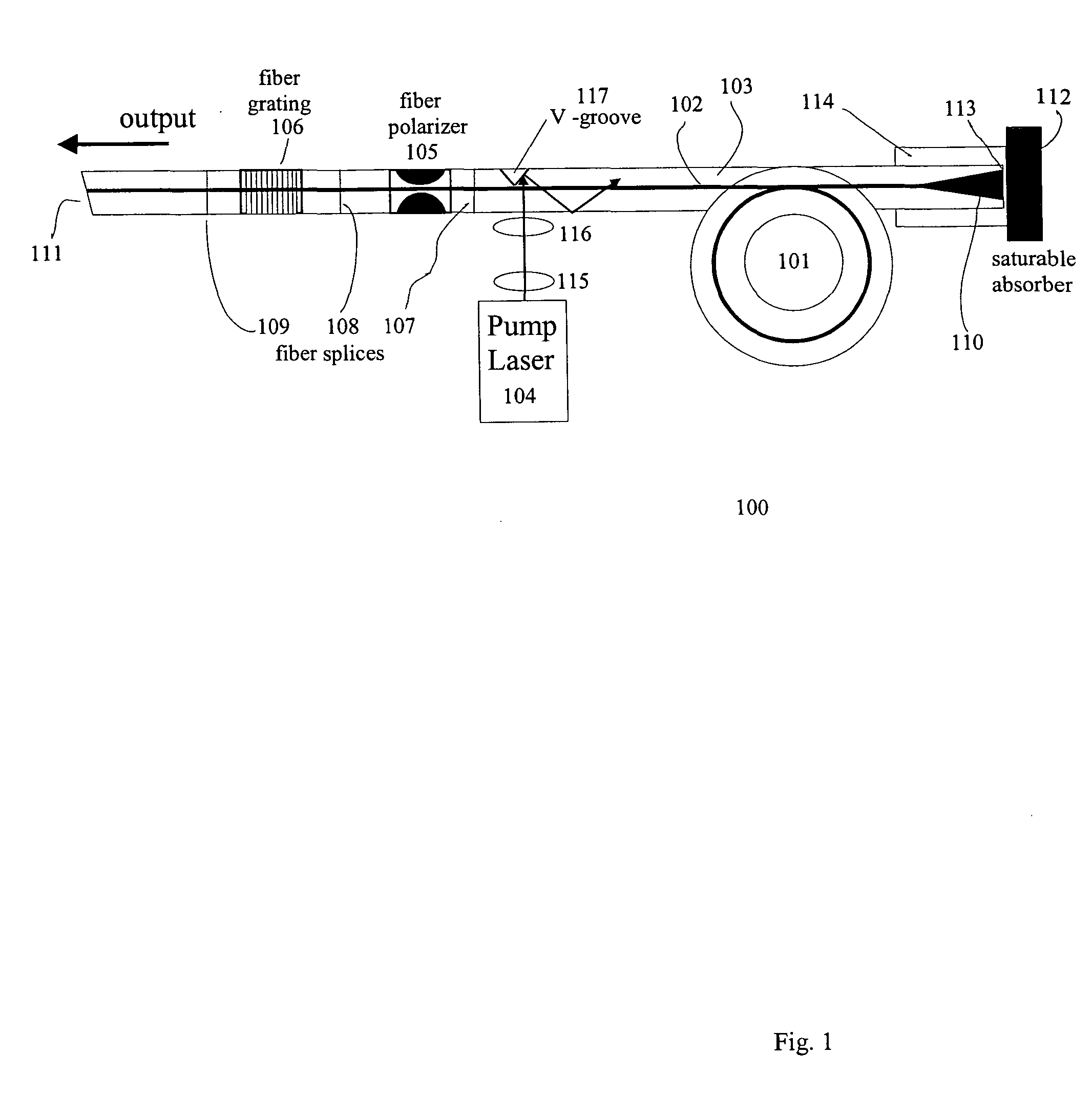Polarization maintaining dispersion controlled fiber laser source of ultrashort pulses
a fiber laser and ultrashort pulse technology, applied in the direction of laser details, active medium shape and construction, optical resonator shape and construction, etc., can solve the problems of limiting the early saturable absorber design, weak intraband contribution, and reducing the polarization of the fiber laser sour
- Summary
- Abstract
- Description
- Claims
- Application Information
AI Technical Summary
Benefits of technology
Problems solved by technology
Method used
Image
Examples
Embodiment Construction
[0046]FIG. 1 represents an exemplary embodiment of the present invention embodied in a fiber laser cavity 100. A polarization-maintaining gain fiber 101 has a core 102 and cladding region 103. The fiber core 102 is doped with rare-earth ions, such as Yb, Nd, Er, Er / Yb, Tm or Pr, to produce gain at a signal wavelength when the laser is pumped with diode laser 104. The fiber core can be single-mode or multi-mode. The fiber laser cavity 100 further contains an integrated fiber polarizer 105 and a chirped fiber Bragg grating 106. Both of these elements, 105 and 106, are generally constructed of short fiber pigtails (e.g., 0.001-1 m in length), which are preferably fusion-spliced to fiber 101 using splices 107, 108 and 109. Alternatively, fiber polarizer 105 can be spliced in front of beam expander 110. When using multi-mode fiber, splice 107 is selected to match the fundamental mode in the gain fiber 101.
[0047] An exemplary integrated fiber polarizer in accordance with the invention co...
PUM
 Login to View More
Login to View More Abstract
Description
Claims
Application Information
 Login to View More
Login to View More - R&D
- Intellectual Property
- Life Sciences
- Materials
- Tech Scout
- Unparalleled Data Quality
- Higher Quality Content
- 60% Fewer Hallucinations
Browse by: Latest US Patents, China's latest patents, Technical Efficacy Thesaurus, Application Domain, Technology Topic, Popular Technical Reports.
© 2025 PatSnap. All rights reserved.Legal|Privacy policy|Modern Slavery Act Transparency Statement|Sitemap|About US| Contact US: help@patsnap.com



